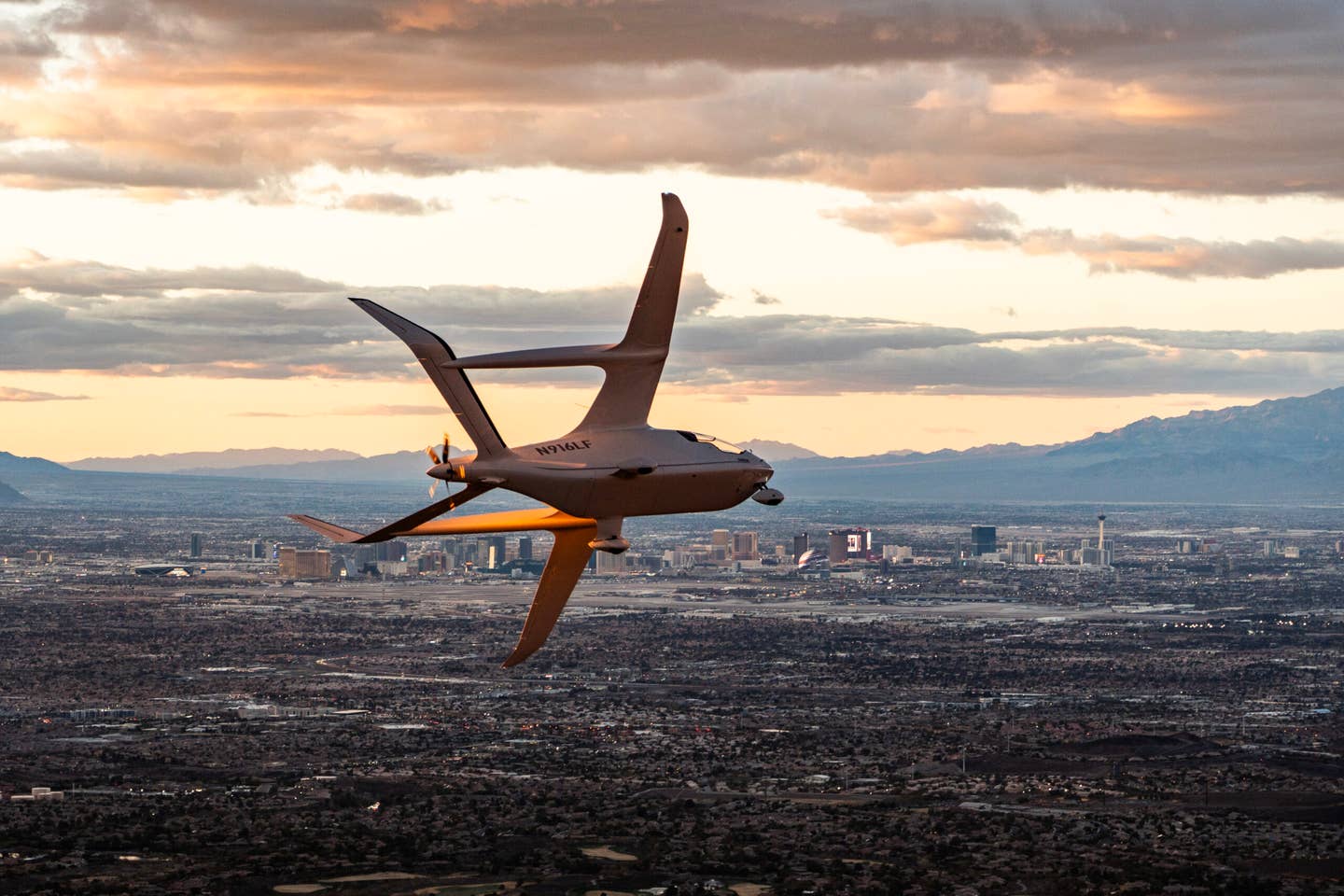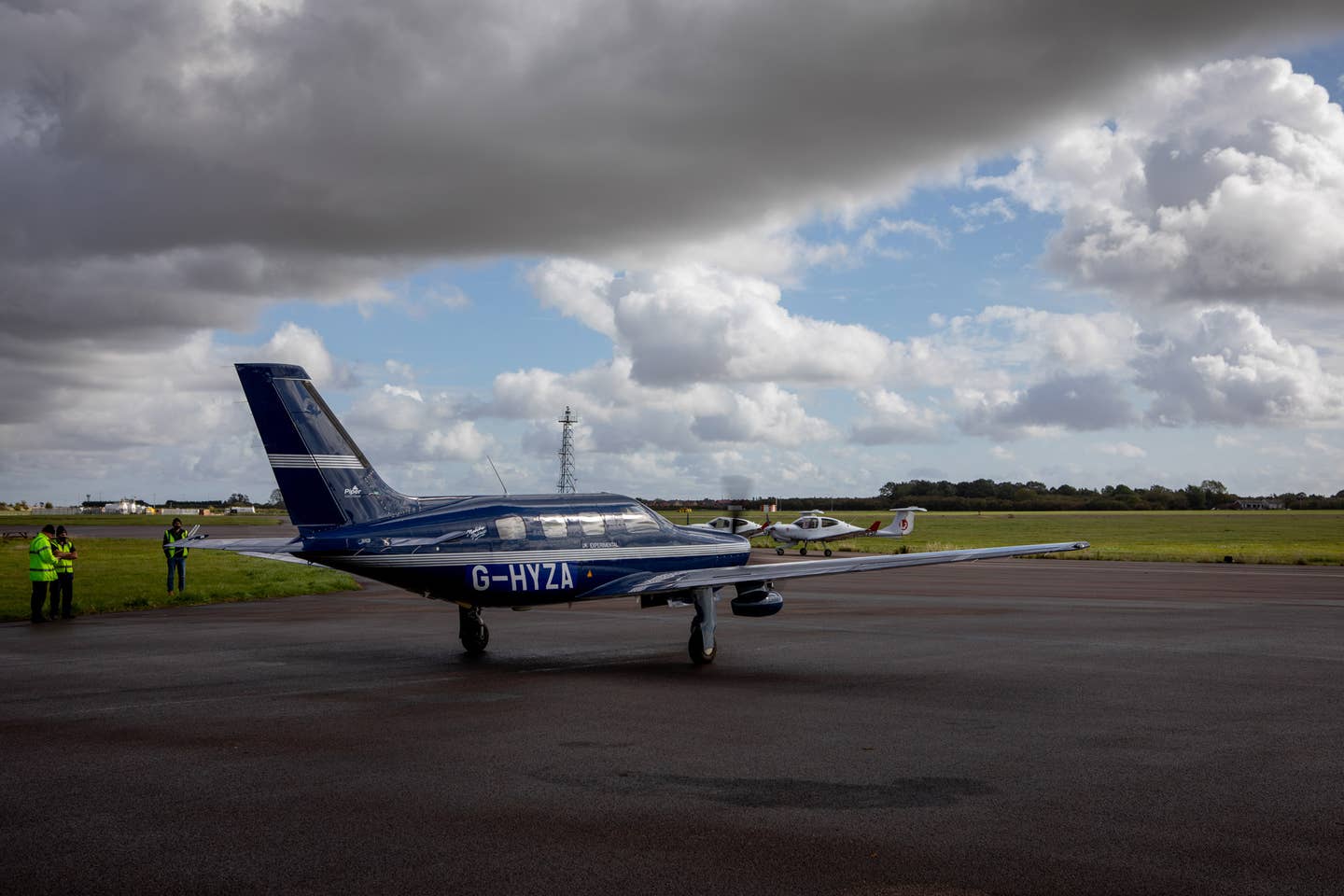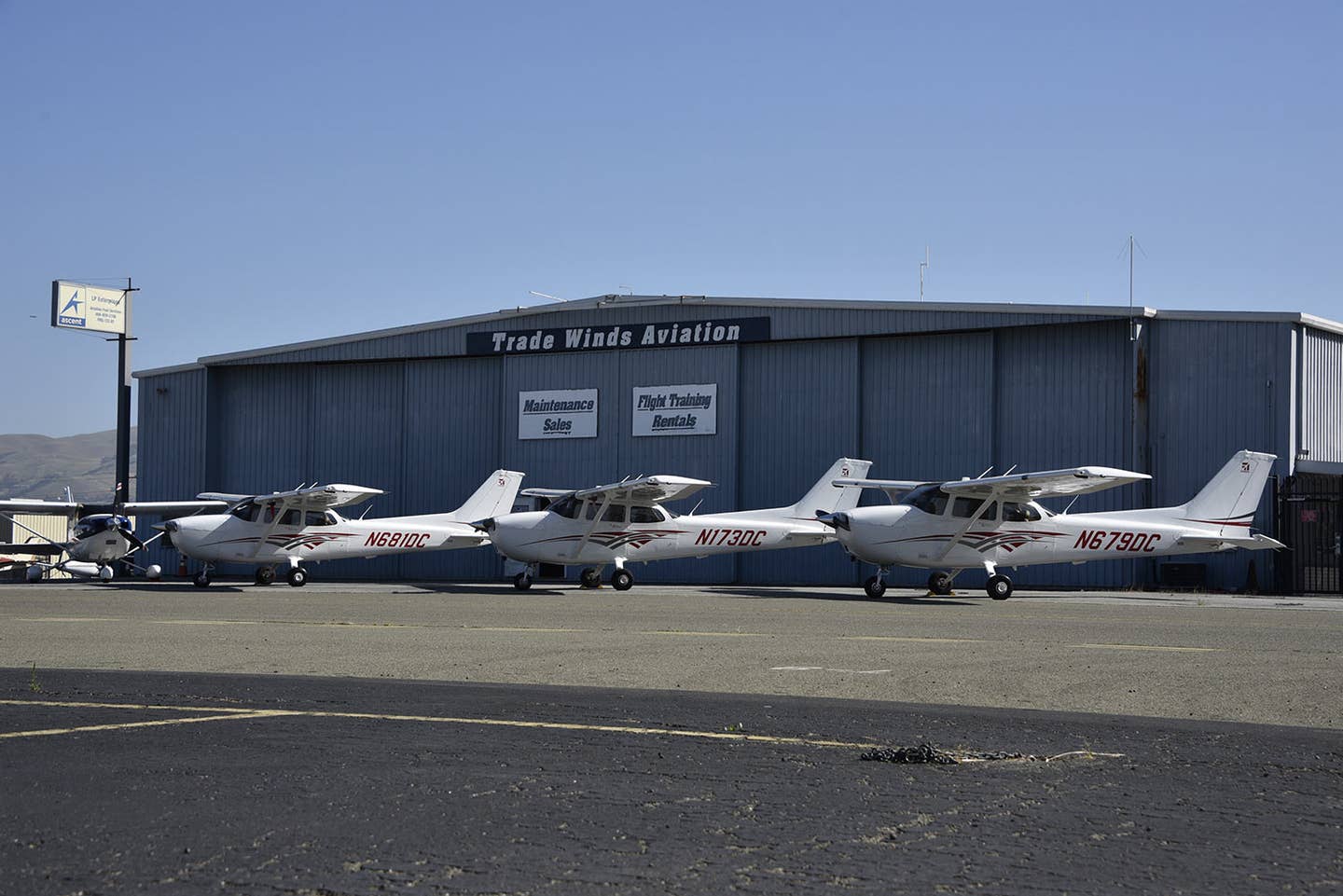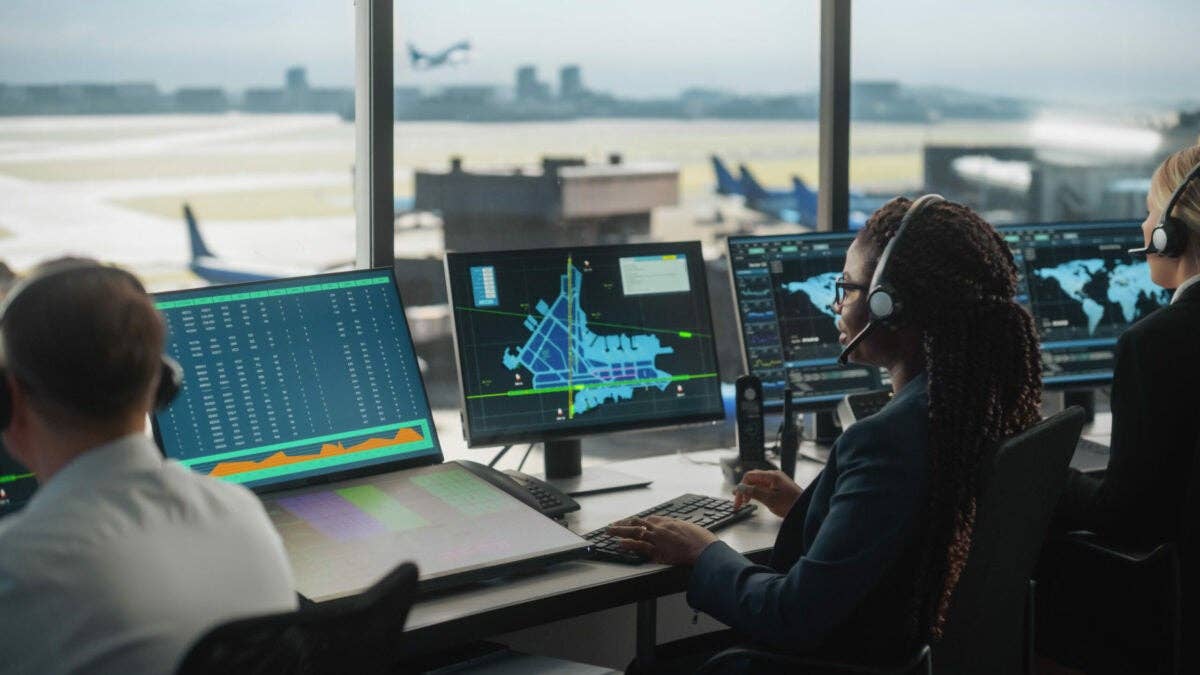Vertical Aerospace Shares Details on eVTOL Crash, Gears Up for Crewed Testing
The company explained what went wrong during the August accident, and it plans the next phase of testing for 2024.
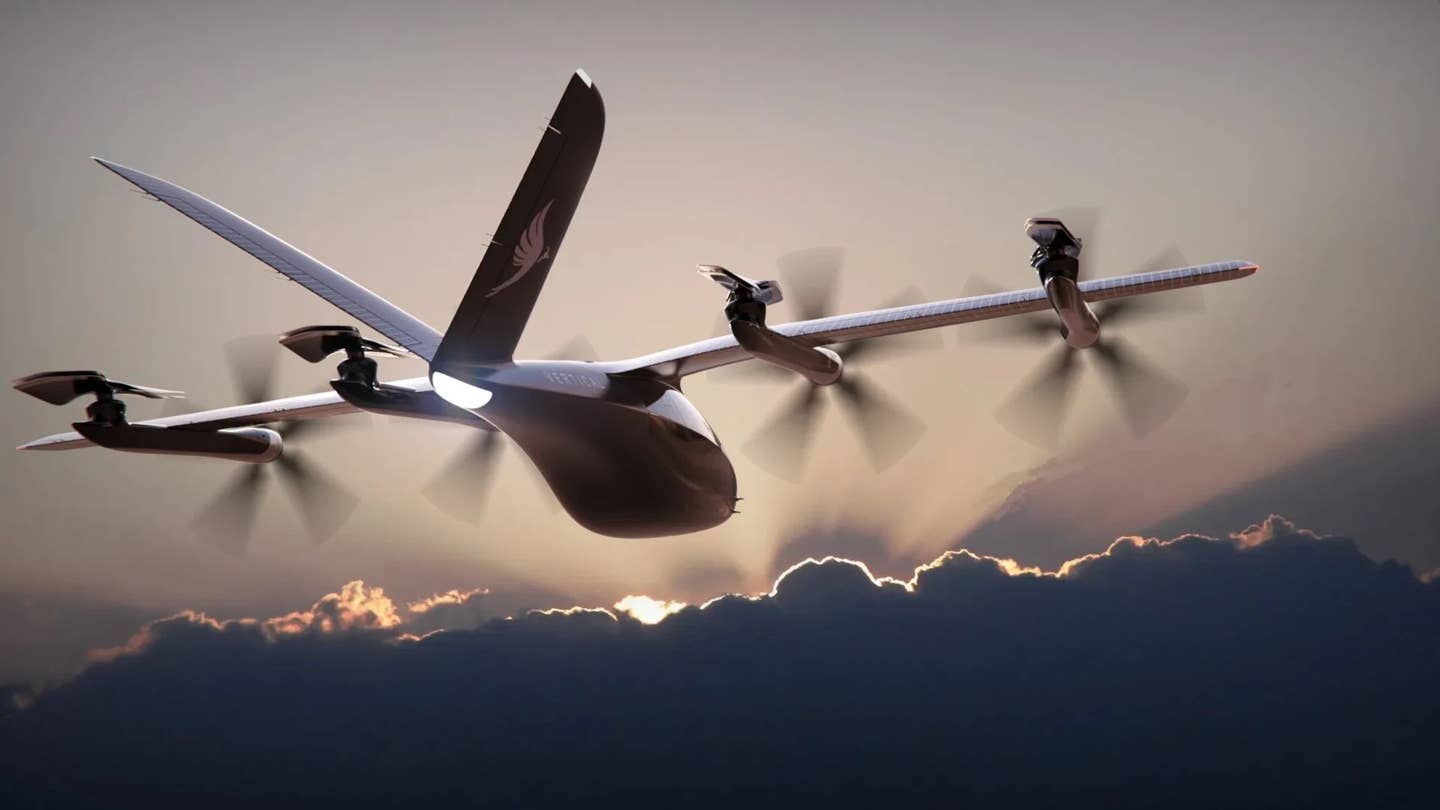
A digital rendering of Vertical Aerospace’s VX4 eVTOL air taxi. [Courtesy: Vertical Aerospace]
Electric vertical takeoff and landing (eVTOL) aircraft, awaiting the green light for entry into service, are going through the wringer of flight testing globally in the name of safety. So, on the rare occasion when one crashes, there will be some questions—and an ensuing investigation depending on where the accident occurred.
Vertical Aerospace, whose VX4 preproduction prototype eVTOL air taxi crashed during uncrewed testing last month, has some answers. The U.K.-based manufacturer on Thursday revealed what caused its aircraft to tumble from about 30 feet in the air onto the runway surface at Cotswold Airport (EGBP).
Vertical confirmed the accident damaged the VX4’s right wing and landing gear. But it asserted its certification activities with the U.K. Civil Aviation Authority (CAA) remain on schedule, and it is preparing for the next phase of flight testing.
“We are pleased with our flight test progress to date and the data, insights, and invaluable learnings we have collected,” said Stephen Fitzpatrick, founder and CEO of Vertical. “While a fault of any sort is disappointing, it is not wholly unexpected at this stage of testing a novel aircraft. I am pleased that as a result of our expert team we have isolated the cause of the fault and been able to provide the [Air Accidents Investigation Branch] with our report within 14 days of the incident. Our planned second upgraded prototype, which will include most of our top tier partners’ technology, will have us in the air early next year.”
Though Fitzpatrick said the company’s certification activities are “on track,” the early 2024 target is later than originally anticipated. Crewed, untethered flights were supposed to begin later this year, lengthening the timeline after the firm pushed back certification from 2025 to 2026 in May.
What Went Wrong?
Fitzpatrick and Vertical chief engineer David King sat down in an exclusive interview with The Air Current to share more details on the August crash, which FLYING draws from here.
The company’s Aircraft One VX4 prototype—which features four tilt propellers on the front of its wing and four lift propellers on the back, each powered by electric motors—has been flying untethered tests at up to 40 knots in thrust-borne flight at its flight test center at Cotswold since June.
The goal of those tests was to fly at 40 knots and “verify acceptable stability, battery efficiency and control characteristics, aerodynamics, structural loads, performance and vibration throughout this speed range—all of which were achieved,” Vertical said in Thursday’s announcement.
At the time of the accident, the aircraft was performing tests with the electrical propulsion unit for the left outboard tilt propeller intentionally disabled. The test followed Vertical’s completion of an uncrewed flight testing campaign in July and aimed to see how the prototype—expected to be retired soon after—would react in adverse conditions.
The VX4 had just completed a “hover-out-of-ground-effect test point” and was beginning its transition to forward flight about 30 feet above the runway when a blade departed the right inboard tail propeller. As the sheathing came off the spar of the blade, the blade bent and snapped off at the root because its adhesive bonding had degraded, causing a supporting pylon to fail.
King explained the pylon failure followed “prior modeling of the scenario.” The aircraft’s flight control system was designed to automatically shut down the motor of the blade that snapped and spool up the intentionally disabled engine, which it did.
However, the failed pylon had “an unexpected effect on [the VX4’s] Controller Area Network (CAN) bus, the digital data bus through which the flight control computers communicate with the motors,” according to The Air Current interview. This degraded the power of two motors on the right wing, causing a rapid descent and crash, the company said.
Vertical noted that the aircraft’s core proprietary technology, including its battery and high voltage systems, performed as expected during the accident. Its voltage, current, and power all stayed within acceptable limits, and cell temperatures were considered normal during and after the impact.
However, the aircraft’s right wing bore the brunt of the crash, with the section beyond the inner pylons folding under torsional pressure. The landing gear was also damaged, though the cabin, cockpit, and onboard battery packs “withstood the impact.”
Vertical Aerospace has suffered what appears to be a significant setback after the electric vertical take-off and landing (eVTOL) aircraft crashed during an unmanned test flight https://t.co/4HvYnqrmCm pic.twitter.com/DZ708GsMAz
— Evans Electric (@tsport100) August 10, 2023
After the crash, Vertical informed the U.S. Securities and Exchange Commission and submitted a report to the U.K. Air Accidents Investigation Branch (AAIB). The AAIB investigation is still ongoing, and Vertical said it will provide a full update when it ends.
The company will continue to use the damaged prototype for ground testing, but said it will not repair it to airworthy standards.
The Outlook
Though Vertical insisted its certification activities are on track, the August incident raises several questions.
The propeller problem is likely a simple fix—the company said it had already redesigned the early-generation technology prior to the crash and that the issue would be “fully resolved” ahead of the next testing phase. Its second-generation propeller will feature on Aircraft Two, another prototype under construction at partner GKN Aerospace’s Global Technology Center in Bristol, U.K. The firm said it is also implementing recommendations from the AAIB investigation.
The CAN bus issue, though, could pose a greater challenge. The company is still analyzing what went wrong. But it believes a wiring failure caused a high-voltage short circuit, which King said is “a very difficult thing to analyze.”
King and Fitzpatrick told The Air Current all crewed tests will be performed on Aircraft Two. The updated prototype is expected to have features more in line with the aircraft Vertical hopes to certify with the CAA. It will include the new propeller design, a second-generation powertrain featuring lithium-ion batteries from partner Molicel, and battery packs built to meet thermal runaway safety requirements.
A more refined flight control system will cover the full flight transition envelope, while an ejection seat will give pilots an escape hatch in an emergency. Aircraft Two will also include components made by certification partners Honeywell, GKN, Hanwha, Solvey, and Leonardo.
Before it’s cleared for crewed flight, the new prototype will need to be tested on certification standards. It will require rigorous oversight, including a Permit to Fly from the CAA. But the company said its first Aircraft Two prototype will fly in early 2024, with a second, identical model expected to be ready for the second half of the year.
Vertical said it is funded into the second half of 2024, and it has about $114 million in cash and cash equivalents on hand per a June update. However, it plans to spend $101 million over the 12 months following August 1 and previously announced it was seeking additional capital to finance activities beyond next August.
The company has significantly less cash and short-term investments on hand than rivals Joby Aviation, Archer Aviation, Lilium, and others. In fact, per SMG consulting, Vertical trails all major competitors in capital raised. Its previous raise of $205 million closed almost two years ago.
Vertical ranked 12th on SMG’s August Advanced Air Mobility (AAM) Reality Index, a ranking of AAM companies based on their ability to mass produce and deliver certified aircraft. But it boasted the second highest aircraft order backlog, trailing only Embraer subsidiary Eve Air Mobility. It has an estimated 1,500 preorders from firms such as American Airlines, Bristow Group, Japan Airlines, Iberojet, and most recently South Korea’s Kakao Mobility, which is expected to be a key launch customer.
When that launch takes place, however, could be a mystery. Vertical continues to stand by its 2026 target. But given previous revisions and the fallout of August’s crash, that may not be a hard deadline.
Like this story? We think you'll also like the Future of FLYING newsletter sent every Thursday afternoon. Sign up now.

Sign-up for newsletters & special offers!
Get the latest FLYING stories & special offers delivered directly to your inbox


